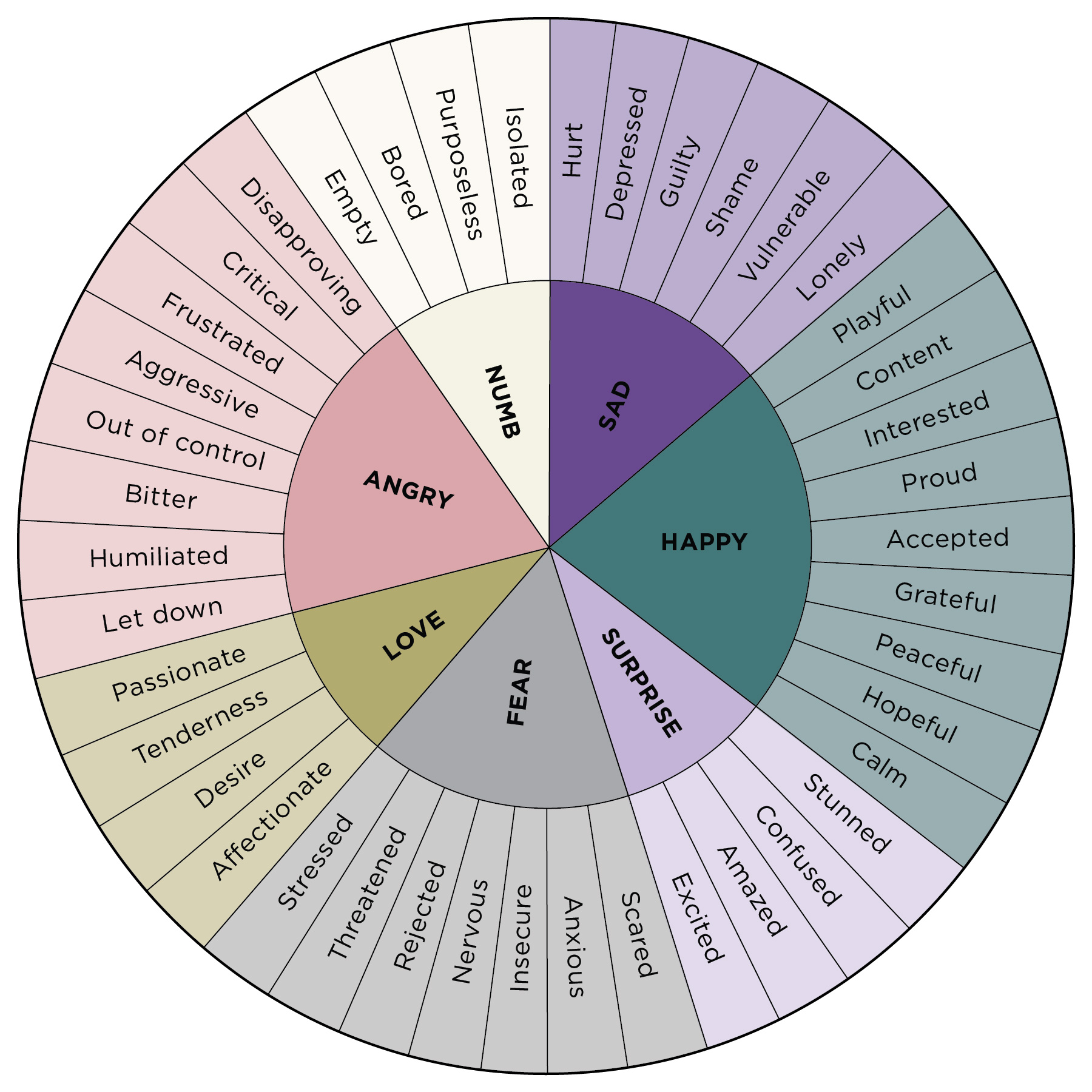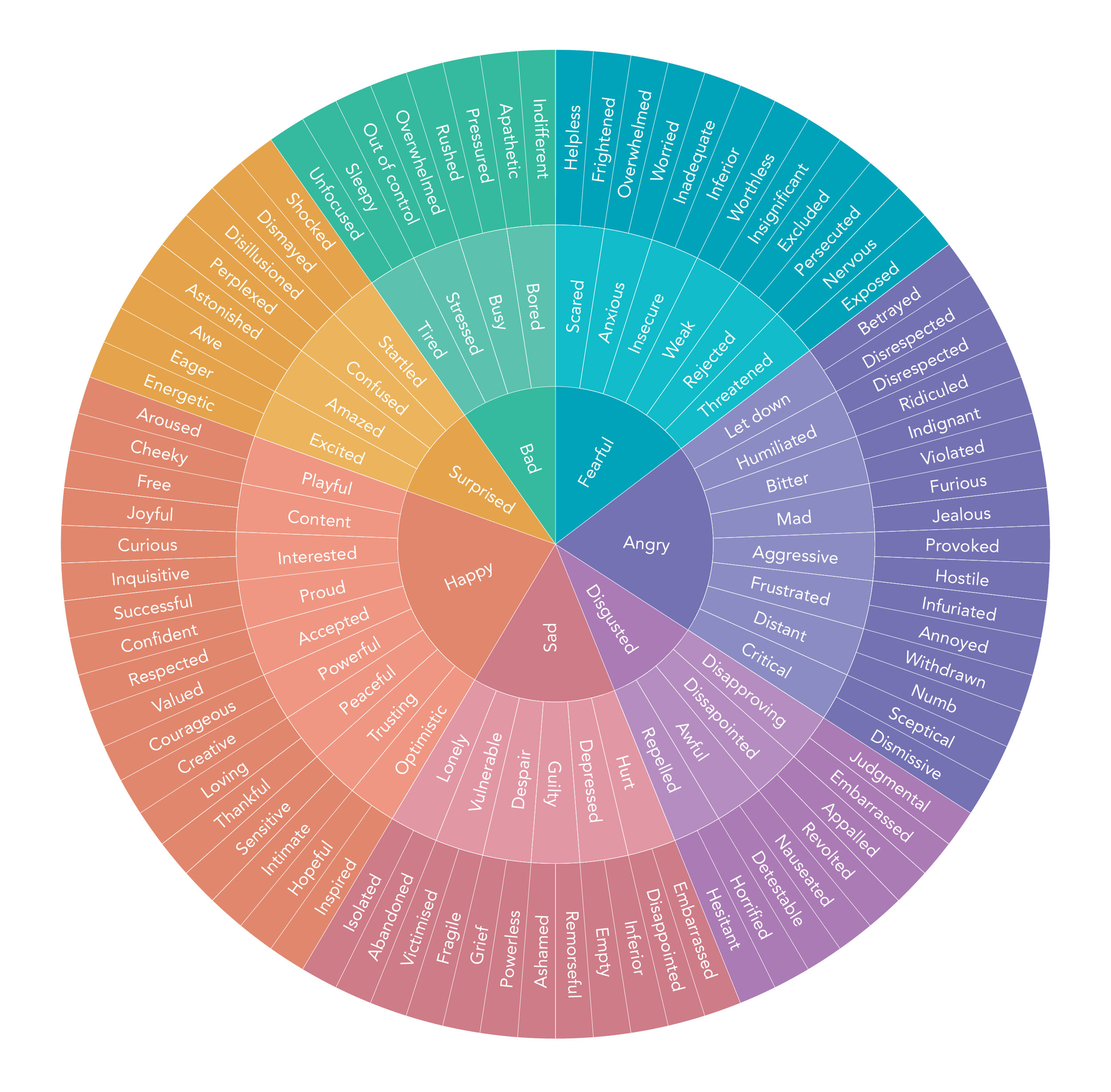
7: ConstructsĪccording to Plutchik, emotions are hypothetical constructs or ideas that help describe a specific experience. The combinations of eight basic emotions produce new emotions, whereby ‘joy’ and ‘trust’ can lead to ‘love’, for example. Robert Plutchik identifies eight basic emotions that humans as well as mammals have in common: anger, anticipation, joy, trust, fear, surprise, sadness and disgust. 4: Basic patternsĮvery basic emotion has a number of common, recognisable patterns and elements that are also called prototypes. Fear, which warns us of dangerous situations, is a good example. The eight basic emotions play a role in human survival. This has resulted, in addition to the eight basic emotions, in 34,000 different discernible emotions. 2: EvolutionĮmotions arose during the evolutionary process and continued to develop in humans. The basic emotions are the same for humans as they are for all other mammals, and are generated in the middle-most part of the brain: the limbic system. Robert Plutchik’s Wheel of Emotions theory is rooted in ten basic theoretical assumptions that can be found below: 1: Animal & human Robert Plutchik’s Wheel of Emotions : basic assumptions
#WHEEL OF EMOTION HOW TO#
This immediately teaches people how to deal with emotions in real-world situations in relation to each other if emotions are not controlled, they can run high and become more intense. So, the emotion of ‘boredom’ can, if it is not kept in check, develop into the more intense emotion of ‘disgust’, and ‘anger’ can flare up and become ‘rage’. This vertical dimension focuses on the intensity of the emotion, which becomes stronger the more it moves inwards.

In its three-dimensional form, the Wheel of Emotions becomes a conical shape. For example, Anticipation and Joy are combined to create Optimism.

The emotions without colours represent mixtures of two primary emotions. In the flat, two-dimensional Wheel, there are eight segments, in which the primary emotion dimensions are located: anger, anticipation, joy, trust, fear, surprise, sadness and disgust.Įach segment has an opposing emotion, and also has its own colour within the Emotion Wheel. The wheel can be displayed in both two and three dimension. There are also secondary emotions that are presented as combinations of the primary emotions. Both the emotion and the color decrease towards the outer edge.

The Wheel of Emotions has been constructed such that every emotion has its own colour.Īs the intensity of the emotion increases (towards the centre of the wheel), so does the indicator colour. The eight primary emotions are entered into a grid opposite one another.Īfter all eight emotions are connected to one another, a wheel is created (hence the name of this model). The eight core emotions form the basis for all other human emotions. Robert Plutchik’s Wheel of Emotions Chart As a result, all emotions are in mutual contact with one another. Combinations of emotions that arise when emotions are mixed together are found in between the basic emotions. The Feelings Wheel of Emotions depicts mutual relations found in between opposing emotions. Towards the middle of the Wheel, the intensity of the emotion and colour increases. The Wheel of Emotions has different layers and dimensions. However, combinations of two basic emotions are not given a colour. As the intensity of the emotion increases, so does the intensity of the colour. The eight basic emotions have each been marked with a recognisable colour within the Emotion Wheel. The Wheel of Emotions has three elements which also act as its three main characteristics: 1: Colours Elements within Robert Plutchik’s Wheel of Emotions

Robert’s Plutchik’s Wheel is often referred to as the theory of emotion. The model helps to develop emotional understanding and emotional intelligence. By reducing these to eight primary emotions, things become a little simpler. However, it is actually impossible to differentiate and understand all 34,000 emotions. Robert Plutchik’s research showed that there are 34,000 distinguishable, specific emotions. The Wheel can be used to navigate between the various intensities that emotions bring along and evoke.Īs such, the Wheel is primarily useful for objectively identifying intense feelings and emotional states. He identified eight primary emotions in polar opposite pairs. The Wheel of Emotions was developed by the American psychologist Robert Plutchik in 1980 as a visual tool for understanding his psycho-evolutionary theory. Do you want unlimited and ad-free access? Find out more What is the Robert Plutchik’s Wheel of Emotions?


 0 kommentar(er)
0 kommentar(er)
